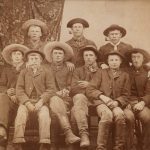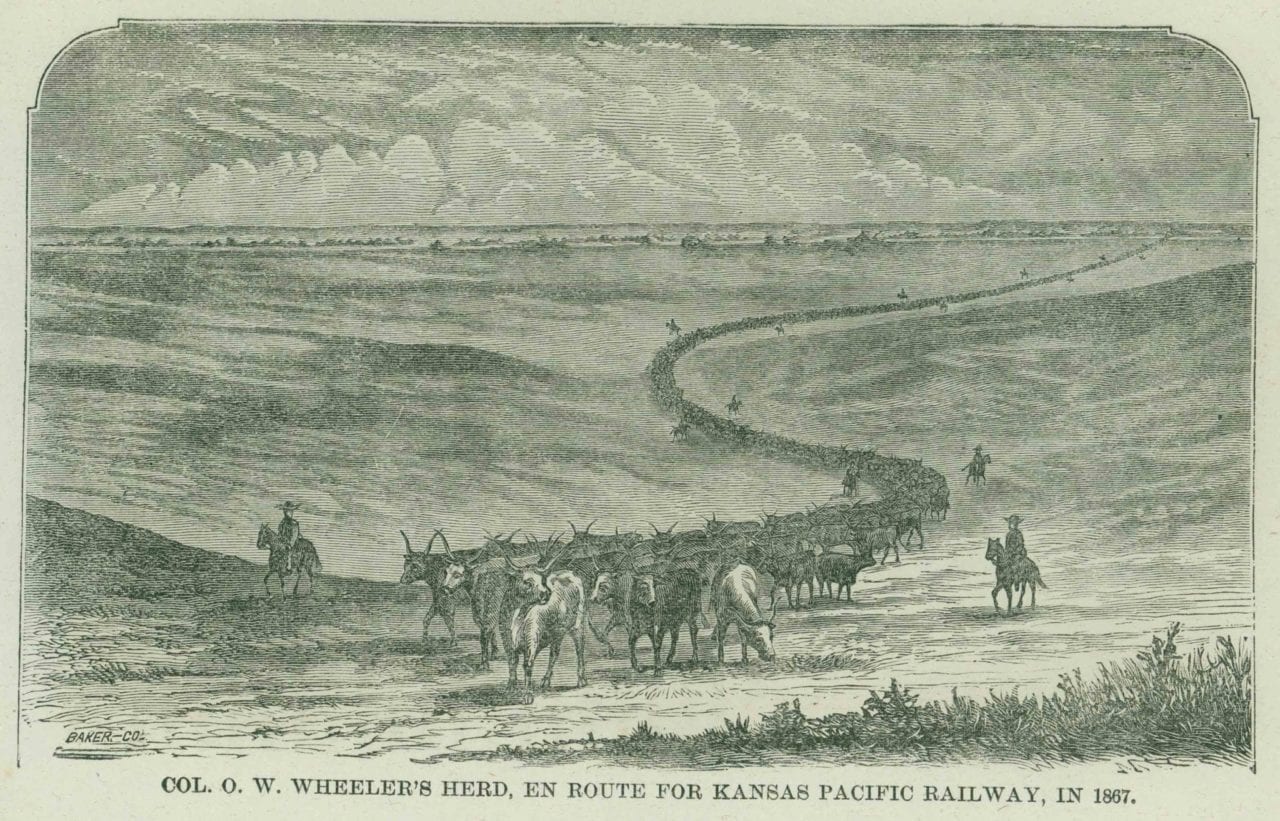Henry Worrall illustration depicting a cattle drive in Historical Sketches of the Cattle Trade of the West and Southwest, by Joseph G. McCoy, 1874.
The Chisholm Trail was a series of trails that led from ranches around San Antonio, Texas, crossing the Red River though current-day Oklahoma to the expanding Kansas railheads of Abilene, Ellsworth, and Dodge City. Drovers would average 8-10 miles per day on a trip that often lasted two months, starting on the trail in spring and early summer.
Jesse Chisholm, a Scotch/Cherokee trader and government interpreter, established a wagon road between his trading posts from Wichita to the Red River, including one near the present site of Oklahoma City. This became an early route leading Texas cattlemen to the cow towns of Kansas.
Ironically, Jesse Chisholm never knew that cowboys adopted his name for the most famous cattle trail in the West. He died in 1868 of cholera at Left Hand Spring near present-day Geary, Oklahoma. Shortened from Chisholm’s road or Chisholm’s trail, “Chisholm Trail” did not come into common usage by Texans until several years after Chisholm’s death.
In 1867 Joseph McCoy established the major incentive for the Chisholm Trail when he purchased land and erected cattle pens in Abilene, Kansas. McCoy then struck a deal with the Kansas Pacific Railway to establish a railhead. He encouraged ranchers to sell cattle to buyers at his Abilene pens. Buyers then shipped cattle on to eastern markets via the new railway.
More than 1.5 million head of Longhorn cattle were driven up the Chisholm Trail to Abilene from 1867 to 1871. The trail crossed the Red River south of Duncan, Oklahoma, led north through Indian Territory to Wichita, Kansas, and on to the railway in Abilene. It is estimated that more than 5 million Texas cattle were driven north to markets from 1866 to 1884, the majority over the Chisholm Trail.
The National Cowboy & Western Heritage Museum resides upon Persimmon Hill, one of the landmarks along the Chisholm Trail routes. Although the main trail ran through Yukon, a major branch of the trail led north along the path of present-day Broadway Extension.
In 1873 John Chisum, often confused with Jesse Chisholm, established a ranching empire in New Mexico extending along the Pecos River for 150 miles.
Additional information can be found at the Dickinson Research Center: http://nationalcowboymuseum.org/drc.
 During the Texas trail drives of 1867—1885, drovers covered from 10 to 25 miles a day, averaging 10 cowboys for 2,500 steers. Most crews consisted of very young men.
During the Texas trail drives of 1867—1885, drovers covered from 10 to 25 miles a day, averaging 10 cowboys for 2,500 steers. Most crews consisted of very young men.

























